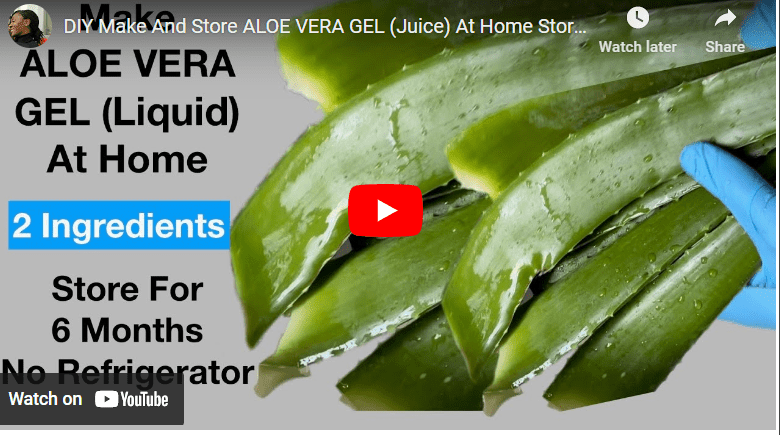Snails are herbivorous and require a balanced diet for proper growth and development. Carbohydrates, proteins, fats, vitamins, and minerals should be included in their diet.
Formulating snail feed involves the following steps which are determining the nutritional requirements of your snails, selecting the right ingredients, acquiring the necessary equipment, determining the proportions of each ingredient, mixing them properly, and storing the feed correctly.
A good snail feed should contain protein, carbohydrates, vitamins, and minerals in the right proportions. The feed should also be easily digestible and accessible to the snails.
In this article, we will discuss how to formulate feed for snails in Nigeria to ensure optimum growth and profitability.
How To Formulate Feed For Snail In Nigeria Step By Step Guide
Snail farming is becoming increasingly popular in Nigeria, and having knowledge on how to formulate feed for snails can be useful for those who are interested in this industry. Here are some tips on how to formulate feed for snails in Nigeria:
Read Also: [Beginners Guide] How To Formulate Poultry Feed In Kenya
Step 1: Determine the Nutritional Requirements of Your Snails
To formulate a balanced diet for your snails, you need to understand their nutritional requirements. Snails require a diet that is rich in protein, carbohydrates, fats, vitamins, and minerals.
The protein content should be at least 20-25% of the total diet, while carbohydrates should be around 40-50%. Fats should make up 10-15% of the diet, while vitamins and minerals should be around 2-3%.
Read Also: [Beginners Guide] How To Process Tomatoes
Step 2: Choose the Ingredients
To formulate the feed for your snails, you will need to choose the right ingredients. Here are the commonly used ingredients and their nutritional content:
- Wheat offals: This is a byproduct of wheat processing containing the chaff and glutenous part of the wheat seed. It is a good source of energy and fiber.
- Bone meal: This is made from normal cattle bones or other animal bones like goat or pig. It is high in calcium and phosphorus.
- Fish Meal: This is made from fish bones and other parts of the fish. It is high in protein and omega-3 fatty acids.
- Pro Vitamins and Mineral: You can get this from those who sell animal feed as a premix. It contains vitamins and minerals that are essential for the growth and development of snails.
- Groundnut Cake: This is a common snack in Nigeria, and it is made from roasted groundnuts. It is high in protein and high in energy.
- SoyaBean Meal: This is the whole bean ground, but soya bean cake is obtained after the extraction of oil or milk from the beans. It is a rich source of protein.
- Palm Kernel Cake (PKC): This is the remains of palm kernel after the oil has been extracted, and you can get it in the market. It is high in both energy and protein.
- Maize: This is your normal dry maize that is ground. It is a serves as a good energy source.
- Oyster shell: This is the shell of oysters that has been dried and ground. It serves as a good source of calcium for fish.
Using these ingredients, you can formulate a balanced diet for your snails.
Read Also: [Beginners Guide] How To Process Wheat into Flour
Step 3: Acquire Equipment
To formulate your snail feed, you need to acquire the necessary equipment. You’ll need a mixer, a weigh scale, and storage containers.
A mixer will ensure that the ingredients are thoroughly mixed, while a weigh scale will help you measure the ingredients accurately.
Read Also: [Beginners Guide] How To Formulate Feed For Snail In Ghana
Storage containers will keep your snail feed dry and free from contaminants. You can purchase these equipment from agricultural equipment stores or online.
Step 4: Determine the Ingredients Proportion
The proportions of each ingredient in your snail feed will depend on the nutritional requirements of your snails.
Read Also: [Beginners Guide] How To Process Soyabeans
You should aim for a diet that is high in protein, carbohydrates, fats, vitamins, and minerals. A typical snail feed should contain 20-25% protein, 40-50% carbohydrates, 10-15% fats, and 2-3% vitamins and minerals.
To determine the right proportions of each ingredient, you can consult a nutritionist or use a snail feed formulation software.
Read Also: [Beginners Guide] How To Formulate Feed For Snail In the US
Step 5: Mix the Ingredients
Once you have acquired the equipment and determined the proportions of each ingredient, you can now mix the ingredients. Using the ingredients mentioned earlier, here is how to mix the ingredients:
- Measure the ingredients using the weigh scale.
- Add the yellow corn, soya meal, and PKC to the mixer and mix for about 10 minutes.
- Add the bone meal, methionine, lysine, and premix to the mixer and mix for another 10 minutes.
- Finally, add the wheat bran and limestone and mix for another 5 minutes.
- Store the snail feed in a clean, dry container.
Read Also: [Beginners Guide] How To Formulate Feed For Snail
You can mix the ingredients using a feed mixer or manually using a shovel. The mixing process should take about 30 minutes to ensure even distribution of the ingredients. Make sure the feed is well-mixed before feeding it to your snails.
Read Also: [Beginners Guide] How To Process Plantain Flour
Step 6: Store the Feed Properly
Proper storage of your snail feed is essential to maintain its quality and prevent spoilage. Store the feed in a dry and well-ventilated room to prevent moisture buildup that could cause mold growth.
Avoid storing the feed in direct sunlight as it could cause heat damage and nutrient loss. Also, keep the feed away from pests and rodents by storing it in airtight containers or using pest control measures.
Regularly inspect the feed for any signs of spoilage, such as mold or off odors, and discard any feed that appears spoiled.
Read Also: [Beginners Guide] How To Process Potatoes Flour
Benefits of Formulating Snail Feed in Nigeria
Snail feed formulation in Nigeria has several benefits such as:
- Improved growth rate: Formulating snail feed in Nigeria can improve the growth rate of snails and increase their weight gain.
- Cost-effective: Formulating snail feed is cost-effective compared to purchasing ready-made feed from the market.
- Customizable: Farmers can customize their snail feed to suit their snails’ nutritional needs and reduce waste.
- Healthier snails: Formulating snail feed can improve the snail’s health and resistance to diseases.
- Increased profitability: A balanced and nutritious feed can lead to increased productivity and profitability in snail farming in Nigeria.
- Quality assurance: Formulating snail feed allows farmers to ensure the quality of the feed they give to their snails.
Read Also: [Beginners Guide] How To Process Pepper Powder
Cost of Formulating Snail Feed in Nigeria
The cost of formulating snail feed in Nigeria includes raw materials, equipment, and labor costs. The cost of raw materials can vary depending on the location and season, while the cost of equipment can be significant. Labor costs for mixing and packaging the feed can also add to the overall cost.
Read Also: [Beginners Guide] How To Formulate Feed For Snail South Africa
Projected Profit of Snail Feed in Nigeria
The projected profit of snail feed in Nigeria depends on factors such as the cost of production, market demand, and level of competition. The high demand for snail meat and growing interest in snail farming can lead to a high projected profit margin.
Read Also: [Beginners Guide] How To Process Palm Kernel Oil
How much is Snail Feed in Nigeria Sold
Snail feed in Nigeria is sold in bulk or small quantities, and the cost can vary depending on the location, quality, and quantity of the feed. The cost can range from ₦500 to ₦1000 per kilogram.
Best practices of Formulating Snail Feed in Nigeria
- Use quality ingredients and raw materials to ensure the nutritional value of the feed.
- Formulate the feed to meet the snail’s nutritional needs and ensure it is easily digestible.
- Ensure proper storage and handling of the feed to prevent contamination and spoilage.
- Monitor the snails’ growth and adjust the feed formulation as necessary.
- Use clean and well-maintained equipment to avoid contamination and ensure quality assurance.
Challenges Of Formulating Snail Feed in Nigeria
- Availability and cost of raw materials can be a challenge, especially in remote locations.
- Lack of knowledge and technical skills in feed formulation can affect the quality of the feed.
- Quality control and assurance can be difficult to maintain, leading to contaminated or spoiled feed.
- Competition in the market can affect the demand and price of snail feed in Nigeria.
Where To Sell Snail Feed in Nigeria
- Local markets: Snail feed can be sold in local markets where there is a high demand for snail meat and farming.
- Online platforms: Farmers can sell their snail feed online through e-commerce platforms or social media.
- Snail farmers’ associations: Snail farmers’ associations can provide a platform for farmers to sell their snail feed to other members of the association.
- Agricultural cooperatives: Agricultural cooperatives can also provide a platform for farmers to sell their snail feed to other farmers or distributors.
Snail Fattening Feed
Snail fattening feed is a specialized type of feed formulated to enhance the weight gain of snails. It typically contains higher levels of protein, vitamins, and minerals to support growth and development.
Read Also: [Beginners Guide] How To Process Cassava to Garri
Can Snail Eat Chicken Feed
Chicken feed is not suitable for snails as it contains high levels of calcium and phosphorus, which can be harmful to snails. Snails require a diet that is low in calcium and high in protein.
How to Feed A Snail In An Aquarium
Feeding a snail in an aquarium is relatively easy. Snails can feed on a variety of food, including algae, blanched vegetables, and commercial snail food.
It is essential to provide a balanced diet and avoid overfeeding, which can lead to water quality problems.
Read Also: [Beginners Guide] How To Process Cashew Nuts At Home
Can Snail Eat Garri
Garri is a starchy food made from cassava, and while snails can eat it, it is not a suitable food source. Snails require a diet that is high in protein and low in carbohydrates.
Snail Feed Recipe
To make snail food, ingredients such as rice bran, cornmeal, soybean meal, and groundnut cake can be mixed in specific proportions to meet the snail’s nutritional needs. The feed can be moistened with water or fruit juice and molded into pellets or blocks for easy feeding.
How To Make Snail Food
To make snail shell powder, clean and dry snail shells can be ground into a fine powder. The powder is rich in calcium and can be used as a supplement in the snail’s diet to promote shell growth and development.
How To Make Snail Shell Powder
Snail shell powder is an excellent source of calcium and can be added to the snail’s feed or sprinkled over their food to promote healthy shell growth and development.
It can also be used as a soil conditioner in gardening to improve soil pH and nutrient availability. Here is the step on how to make snail shell powder.
- Collect and clean snail shells: Collect snail shells and remove any visible dirt or debris by washing them in water.
- Dry the shells: Dry the shells in the sun or an oven at low temperature until they are completely dry and brittle.
- Crush the shells: Use a mortar and pestle, blender, or food processor to crush the dried snail shells into small pieces.
- Grind the shells: Grind the crushed shells into a fine powder using a coffee grinder or a mill.
- Sieve the powder: Pass the powder through a sieve to remove any large or coarse particles and ensure a smooth and fine texture.
- Store the powder: Store the snail shell powder in an airtight container in a cool, dry place to maintain its quality and freshness.
Conclusion
Formulating the right feed for snails is crucial to their growth and health. A balanced and nutritious diet can increase the snail’s productivity and profitability in the snail farming business in Nigeria. Farmers should strive to provide their snails with quality feed and monitor their growth to ensure optimum performance.



